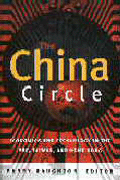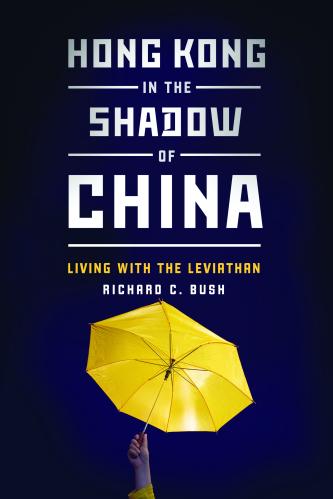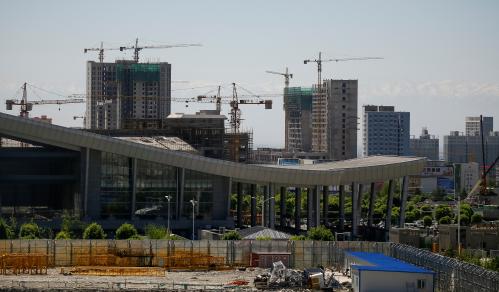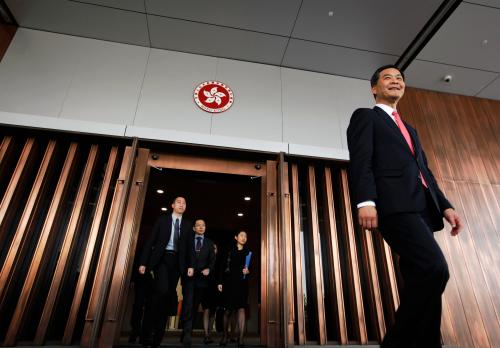“Connectivity” is one of China’s keywords, writes Philippe Le Corre—all the infrastructure built over the past few years in cities neighboring Hong Kong has only helped to dilute the city’s power as an economic hub. It is now part of a vast economic zone where it is no longer the center. This piece originally appeared in Nikkei Asian Review.
In 1997, I wrote a book in French called “Apres Hong Kong,” outlining three possible futures for the newly formed special administrative region.
In the first, Hong Kong would remain an international business center, home to the headquarters of multinational companies. In the second, it would become a regional platform in Asia. The final one saw Hong Kong becoming much more of a Chinese city at the edge of the Pearl River Delta.
For all the attempts to keep Hong Kong as an international hub, 20 years later, it is the final scenario that is taking shape.
The Pearl River Delta region, which used to be Hong Kong’s back garden for manufacturing and production, was recently officially christened the “Guangdong-Hong Kong-Macau Greater Bay Area.” It includes a population of 60 million spread across Guangzhou, the capital of Guangdong Province, the special economic zones of Shenzhen, Zhuhai and Shantou, and several other cities, all connected by bridges, highways, railways, ports and airports.
“Connectivity” might be one of the keywords of China’s discourse but all the infrastructure built over the past few years in neighboring cities has only helped to dilute Hong Kong further into a vast economic zone where it is no longer the center.
There are now as many Fortune 500 companies headquartered in Shenzhen as in Hong Kong. Even Hong Kong’s tycoons do not have the kind of special relationships they used to have with the senior leadership in Beijing since there is much competition for influence with business leaders from within mainland China. In 1996, Lu Ping, director of China’s Hong Kong affairs office, insisted, “Shanghai would continue to be socialist while Hong Kong would remain capitalist.” Who can believe that this is still the case, with Shanghai looking to emerge as Asia’s top financial center?
It is possible, as pro-Beijing advocates would argue, that the Bay region has several centers, of which Hong Kong is one. But to anybody who has visited Shenzhen recently, it is hard not to see it as the area’s core city. The sleepy fishing village of the 1970s has become one of China’s megacities and high-tech hubs. In three decades, it has grown from a population of 50,000 to a stunning 15 million and now houses giants such as Tencent Holdings, ZTE, Huawei Technologies and China Merchants Group.
It is no accident that these conglomerates have picked the pilot special economic zone designated by then-leader Deng Xiaoping in 1979, rather than Hong Kong, to set up their headquarters. In the “Chinese Cities of Opportunity 2017” survey conducted by PwC and the China Development Research Foundation, Guangzhou and Shenzhen topped the overall ranking and led in eight of 10 categories, including ease of doing business, intellectual capital and innovation, technology readiness and economic clout. (Hong Kong was not included in the survey.)
Beijing’s ambition is, and has always been, to dilute Hong Kong’s importance rather than to preserve its special traits. The emergence of more free trade zones is an expression of China’s desire to attract foreign direct investment across the mainland, not just to the south. Shanghai, of course, was the first municipality to be given the right to open its own FTZ in 2013, much to Hong Kong’s chagrin. There are now 11 FTZs around the country.
Off road
Mainland cities favored by Beijing have diminished the finance hub.
As China speeds up its implementation of the Belt and Road Initiative, Hong Kong is trying hard to stay in the game. It has offered to build and host treasury headquarters for the Asian Infrastructure Investment Bank. Hong Kong has hosted several Belt and Road forums, too. But it remains on the margins and overly focused on service industries rather than infrastructure.
Hong Kong’s harbor may still be one of the busiest in the world at No. 5 in container volumes, but with the help of investments by tycoon Li Ka-shing’s conglomerate CK Hutchison Holdings, Shanghai and Shenzhen now rank first and third in the world.
Again, the mainland has overshot the former colony. Meanwhile, the main financial institutions in charge of financing or co-financing the Belt and Road are all Beijing-based: the AIIB, the Silk Road Fund, the China Development Bank and the China Export-Import Bank.
Without a doubt, the Belt and Road’s final destination is Europe and its 500 million consumers. Why would China need Hong Kong to interact with Europe? The European Commission, as well as individual European governments, talk to Beijing frequently. After all, the EU and China are each other’s largest trading partners.
China needs to improve relations with the EU by opening its market to European investors, to get more support for its new narrative. Discussions for a China-EU Common Agreement on Investment are under way.
Will Hong Kong be a global player in the next 30 years as per the semi-autonomous status granted by the original Sino-British joint declaration? A lot will depend on Beijing’s will to leave intellectual space for the territory to expand.
Whether Hong Kong will be allowed to play a role in China’s ambitious geo-economic strategy remains an open question. The 2014 pro-democracy Umbrella protest movement has contributed to Beijing’s distrust of the territory, seen as a bad influence on the mainland.
The outlook will also depend on new Hong Kong Chief Executive Carrie Lam Cheng Yuet-ngor and her administration. They will have to design a narrow path for Hong Kong alongside, or next to, the Belt and Road Initiative. Hong Kong’s only chance of keeping its international dimension is to continue to invest in talent and education, and to serve as a convener of people and ideas from across the world to enhance its own intellectual and cosmopolitan identity. For this differentiation to continue, the “one country, two systems” principle has never been so critical.










Commentary
20 years on, is Hong Kong the international hub it was hoped to be?
June 30, 2017